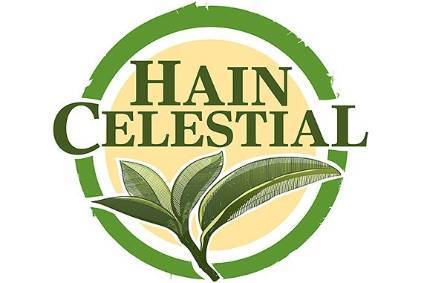
US food group Hain Celestial expects its on-going product rationalisation programme to drag on sales this year but will also look at potential acquisitions as cost savings gather pace.
Chief executive Mark Schiller, who took the CEO job last November, is continuing to pursue the Project Terra 2020 strategy put in motion by his predecessor and company founder Irwin Simon to eliminate unprofitable lines from its portfolio.
However, he tweaked his approach earlier in the year to focus on profitable growth at the expense of purely honing in on volume-driven gains, which will result in a smaller company with fewer SKUs and higher margins and profits.
Last week, Hain Celestial completed the divestiture of its Pure Protein division with the sale of the FreeBird chicken and Empire Kosher brands to a private investor following the disposal of Plainville Farms in February. Hain Celestial also last week announced the sale of the WestSoy Tofu business to Keystone Natural Holdings.
On a post-earnings conference call last week, Schiller said FreeBird and Empire Kosher were low-margin and low-growth businesses “with minimal potential to be accretive to our portfolio”. As an update, he said Nasdaq-listed Hain aims to eliminate around 350 SKUs and reduce the number of co-manufacturers by 20 to 25, with a goal to improve margins by more than 150 basis points in the US and Canada “over time”.
But the SKU rationalisation programme comes at a cost, as Hain Celestial said it now expects full-year reported sales to be at the lower end of its previously announced guidance of US$2.32-$2.35bn, representing a drop of about 4% to 6% from 2018, or a decline of 2.5% to 4% in constant-currency terms. However, the outlook for adjusted EBITDA was retained at $185-$200m.

US Tariffs are shifting - will you react or anticipate?
Don’t let policy changes catch you off guard. Stay proactive with real-time data and expert analysis.
By GlobalDataNew York-based Hain reported a 5% decline in third-quarter revenues to $599.8m for the three months ended 31 March, and a more than two-fold decrease in net income to $10.1m. Operating income fell to $23.9m from $29.3m, while adjusted operating income dropped more than 30% to $38.9m. The EBITDA margin was down 120 basis points at 6.9%.
Schiller also said the company is finalising the restructuring of its North American business to “create centres of excellence, reduce layers, increase spans of control, and refocus resources. While we expect there will be some modest savings going forward, the primary driver of these changes are efficiency and effectiveness”.
He continued: “While our total distribution points are still down due to last year’s SKU reduction and this year’s elimination of uneconomic activities, velocities on the get-bigger brands were up 8% in the third quarter compared to 6% in the second quarter. Importantly, we’ve delivered this velocity growth while expanding margin on the get-bigger brands.
“In summary, our results are showing signs that the business transformation is starting to work. We’re demonstrating our ability to reduce uneconomic activity and stabilise and cost-reduce areas of our supply chain, resulting in better gross margins and EBITDA margins. As forecasted, this will come with some softness in the top line through the balance of this year and much of next year, but we’re running this business with much greater discipline around a very clear strategy.”
Meanwhile, chief financial officer James Langrock provided an update on Project Terra, with $27m in cost savings made in the third quarter, taking the year-to-date total to $62m. Savings for 2019 are expected to be around $90m.
Langrock added Hain Celestial will use its $27.6m cash balance to de-lever the balance sheet “and pursue profitable M&A”. Net debt stood at $724m at the end of the third quarter.
“In the US, we have a long tail of unprofitable, low velocity SKUs resulting in considerable distribution losses,” Langrock said. “As a result, we are aggressively removing uneconomic trade and finalising our SKU optimisation efforts, including pricing actions, which will impact our net sales for the next several quarters.”
Hain’s inventory levels in the US are $35m below the peak in August, he added.
Schiller said any loss-making SKUs will be addressed through rationalisation or by increasing prices, but will eliminate product lines if retailers can not take those on board.
“It’s important to understand that we still have lots of significant work left to be done to turn our business to acceptable levels of growth and profitability in line with our commitment to deliver consistency,” the CEO said.
He added: “The last SKU rationalisation exercise was really not about addressing low profit SKUs, it was about addressing low-growth SKUs. And so we’ve eliminated a bunch of SKUs that were a drag on growth, but some of those were profitable. So we actually took some profit out of the business on the last SKU rationalisation. It improved margins, they were lower margin businesses, but they were profitable businesses and so part of the earnings drag this year is the fact that we eliminated profitable SKUs.”
Schiller hopes new product innovation will replace the low-margin product lines and the company has reallocated resources behind the get-better brands.
“For the get-better brands, where we’re primarily focused on simplification and expansion of profit, our velocities were also up 1% versus a year ago in the quarter. This represents the first quarter of velocity improvement in the last two years on this collection of brands and suggests that we are doing a good job eliminating the lowest velocity programmes and SKUs from our assortment. The result is that the remaining SKUs are faster turning and more likely to hold their shelf space in the store over time.”
just-food analysis: Will incoming Hain Celestial chief usher in new era?



